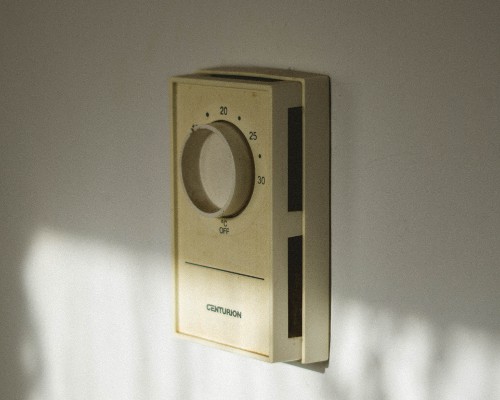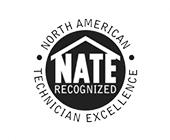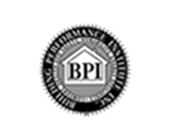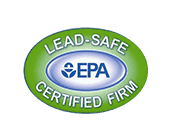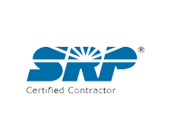The sound of an AC being turned on can be a very comforting noise during the hotter summer months, as it lets us know that cool refreshing air is on the way.
However, in cases of a thermostat not turning on ACs, there can be cause for concern. There are several possible reasons for this, all of which require some degree of professional help to resolve.
In this guide, we’ll walk you through some common reasons why your thermostat isn’t turning on your AC unit and give some insight into how these issues can be fixed by an HVAC technician, whether it’s by checking the wiring or having a completely new AC unit installed.
Tripped circuit breakers
HVAC systems with a thermostat are connected to circuit breakers. This is necessary to protect devices in case of a power surge. Sometimes an entire system is controlled by one circuit breaker, but often there are separate breakers for devices like your AC.
If a tripped breaker cuts the power to your AC, you may have your thermostat on, but the AC is not working.
To fix this issue, a professional will check all the switches in your home’s circuit breaker box and will turn on all the tripped HVAC and thermostat-related switches. An indicator that a breaker is tripped is the switch being in the middle position.
When turning on a circuit breaker, the switch must be pressed down completely and then pressed up until a clicking sound is heard.
If the breaker trips when you try your thermostat again, there’s likely another problem in the system or one of the devices. Only a trained HVAC technician should be servicing the system at this point.
Weak batteries
If your thermostat uses batteries, the batteries dying or a bad connection developing between the batteries and the terminal can cause the thermostat not turning on ACs. The batteries may either be old, or rust and dust over time may be causing a poor connection.
To fix this problem, a technician will pull your thermostat off from the wall and check if it takes batteries. They’ll then change the batteries, reinstall the thermostat, and check if your AC works.
It’s important during this process to also clean the battery holder terminals with a soft cloth or cotton swab dipped in rubbing alcohol.
The main thing to check for is a “no power source” message on the thermostat’s screen. If there’s no such message and your AC still doesn’t work, there might be another reason for the issue, and you should have your HVAC technician investigate further.
Bad wiring
A common reason your thermostat won’t turn on AC is bad wiring. For example, rodents may have chewed through some wires, or moisture could have corroded some connections.
A technician will need to check your thermostat wiring in the following places:
- The back of the thermostat
- The wall plate
- The AC control board
The power to your HVAC system will need to be turned off before starting. The technician will remove the thermostat from its wall plate and inspect the wires for any damage or loose connections.
They’ll also need to see if the wires are correctly color-coded and matched to their terminals. If there are problems with the wires, they’ll need to be tightened or replaced.
The wall plate should be checked for any cracks or holes that could expose the wires to moisture or dust. If they find any defects in the wall plate, it will have to be replaced.
Lastly, they’ll want to see if the AC control board has any blown fuses or burnt wires. They’ll do this by opening the access panel of the unit to locate the control board and look for signs of damage or malfunction on the board.
If they find any problems within the control board, they’ll take the time to resolve this.
Wiring, whether within a traditional or smart thermostat, should only ever be handled by a professional due to the dangers associated with it.
Bad sensors
Your thermostat has sensors that measure the temperature in your home and send signals to your AC to turn it on or off. If these sensors are broken or damaged, your thermostat won’t be able to communicate with your AC properly, causing a thermostat not turning on ACs.
For example, if the temperature sensing element in your thermostat is bad, it could read a lower temperature than what it actually is. This would prevent your AC from turning on even if you set the thermostat to a lower temperature.
This problem can be addressed by having a professional replace the sensors in your thermostat. They’ll need to turn off the power to your HVAC system and remove the thermostat from its wall plate. Then they’ll locate the sensors on the back of the thermostat and disconnect them from their wires.
Afterwards, the technician will install new sensors and reconnect them to their wires, then calibrate the sensors according to the instructions in your thermostat manual.
Bad AC or furnace
Sometimes when your thermostat is on but the AC won’t turn on, the problem is not with your thermostat, but with your AC or furnace. There are many issues that could prevent your AC or furnace from working properly, such as a bad blower motor, low refrigerant, leaky ductwork, dirty coils, or frozen pipes.
Diagnosing and fixing an issue with a furnace or AC unit can be quite complex and should only be done by HVAC technicians.
Having problems with your thermostat and AC? Contact Autumn Air
A thermostat not turning on ACs can be very worrying, but it doesn’t have to be. A professional will be able to properly diagnose and fix the issue.
At Autumn Air, we’re happy to assist you with all of your thermostat, furnace, AC, or any other HVAC system issues. If you live in the Avondale area, contact Autumn Air today to get started.

